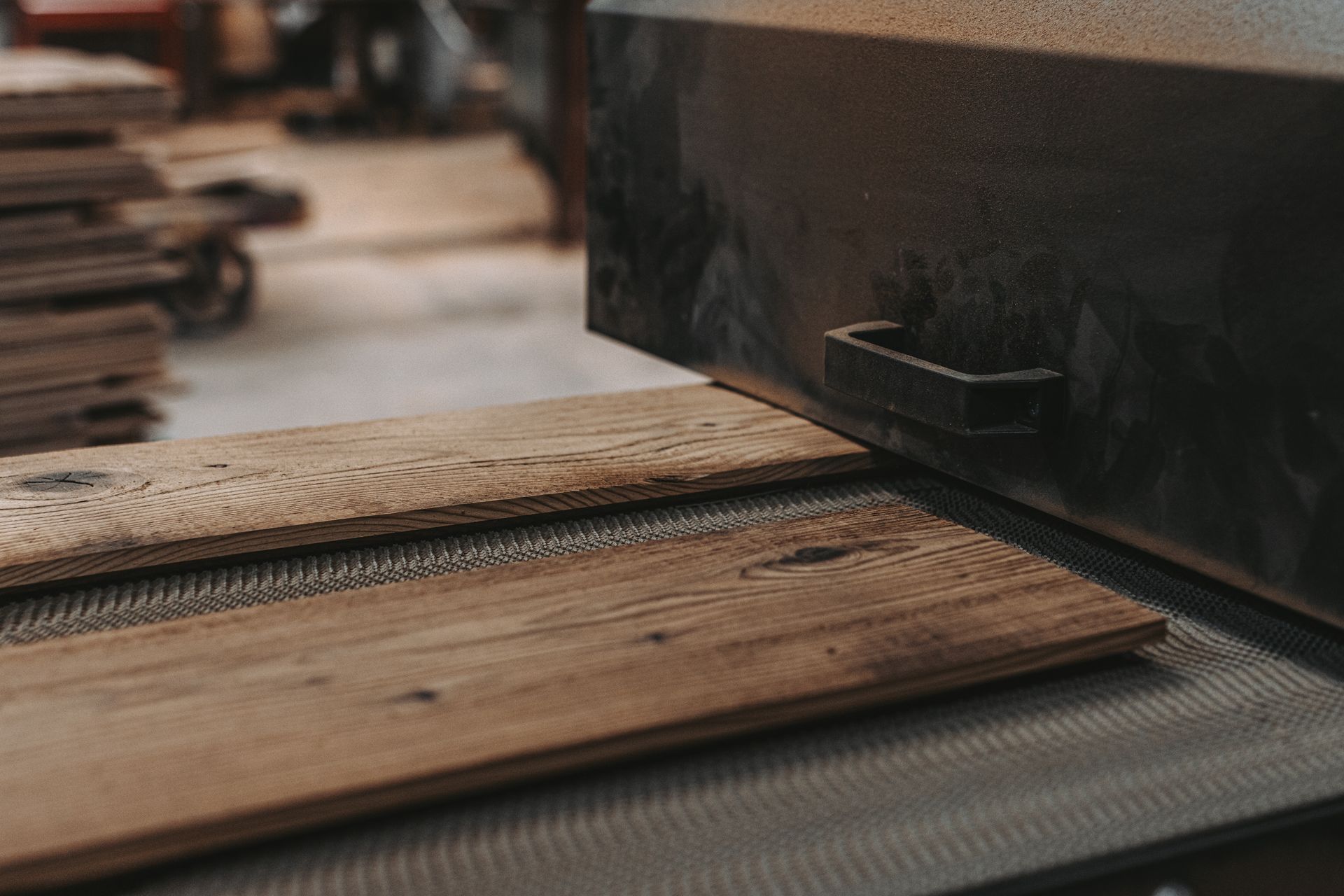Plain Sawn Boards: Are They Worth the Risk?
Plain Sawn Boards: Pros and Cons Uncovered

Step into any lumberyard, and you'll notice plainsawn (or flat-sawn) boards everywhere. They’re the most common and affordable choice, available in a wide range of sizes. But if you’ve heard woodworkers talk, you might have caught hints about these boards being prone to warping, cupping, or twisting. That might leave you wondering, “Are plainsawn boards a good choice for my project, or are they more trouble than they’re worth?”
Let’s take a closer look at what plain sawn boards are, why they have a reputation for instability, and how you can use them successfully without regretting it.
What is Plain sawn Lumber?
Plainsawn boards are cut using the simplest and most efficient method. The saw slices straight across the log, creating the maximum amount of usable wood. This makes plain sawn lumber the most cost-effective option for sawmills to produce.
This cutting method also creates the wood grain pattern most people think of when they imagine “wood grain.” Plainsawn boards often feature dramatic cathedral-shaped or flame-like patterns, giving them a lot of visual appeal.
Why Do Plain Sawn Boards Move?
Here’s the main challenge with plainsawn boards. Wood naturally absorbs and releases moisture based on its environment, and this movement happens unevenly depending on the grain’s direction. The grain on plainsawn lumber runs in the same direction as the tree’s growth rings, making it more likely to shift as the wood dries.
This movement can cause several problems:
- Cupping: The board curves across its face, forming a shallow bowl shape.
- Twisting: Corners of the board don’t stay flat, making pieces uneven.
- Bowing: The length of the board bends, giving it an arched appearance.
- Checking: Cracks form as the wood shrinks.
These risks might make plain sawn lumber sound like a headache. But hold on, because there’s another side to the story.
The Pros
Plainsawn boards have big advantages that can’t be ignored. Their efficient production process means they cost about 20-30% less than lumber like quarter-sawn boards. Plus, they’re available in wider sizes, which is a huge win if you’re building something like a tabletop or cabinet door and need large, uniform pieces.
If the lumber is properly dried and used in the right conditions, plainsawn boards can perform just as well as their more expensive counterparts. The key is working with the wood’s natural tendencies instead of against them.
When to Use
Plainsawn boards might not be perfect for every project, but they do shine in the right circumstances. Here are some examples of when they work best:
- Painted projects: If the wood grain won’t be visible, the smaller cost is worth it.
- Hidden parts: Use plainsawn boards for areas like the internal structure or hidden supports.
- Dry environments: These boards are ideal for indoor settings where temperature and humidity stay steady.
- Engineered products: Plywood or laminated beams use plainsawn veneers successfully.
Tips for Reducing Risks
Because plainsawn lumber can be a bit unpredictable, smart woodworkers use these strategies to manage its natural movement:
- Dry it properly: The wood’s moisture content needs to match that of its final environment. Kiln-dried lumber is your friend.
- Pay attention to grain orientation: When you glue boards into panels, alternate the grain direction to prevent major cupping.
- Provide the right support: Strong joinery and bracing help keep your boards stable.
- Acclimate before use: Give the wood time to settle into your workshop’s conditions before cutting or assembling.
These simple steps can go a long way in making sure plain sawn boards work the way you need them to.
Is Plainsawn Lumber Right for Your Project?
The real question isn’t whether plain sawn boards are good or bad. It’s about whether they’re the best match for your specific project. Here are some key factors to consider:
- What are you building? Projects requiring high stability (like flooring or structural beams) may need more expensive cuts like quarter-sawn lumber.
- Where is it going? Indoor spaces with controlled temperatures and humidity are ideal for plainsawn boards.
- Do you have the time to prep the wood? If you want perfect results, you might need to allow time for the wood to acclimate or dry further.
- Are you working with a tight budget? Plainsawn lumber can offer huge savings that you can reinvest in other parts of the project.
Also read: Reclaimed Wood Construction Hacks DIYers Swear By!
Quality is More Important Than the Cut
One thing often gets overlooked in discussions of plainsawn lumber, what really matters is the quality of the wood you’re buying. Well-dried, properly stored plainsawn boards are often better than low-quality, poorly processed quarter-sawn pieces. Here’s what to look for:
- Moisture content: Make sure it’s appropriate for the environment where your project will live.
- Gradual drying: Fast drying methods can leave lumber unstable.
- Proper storage: Boards should be well-supported and kept in a dry, covered space.
Final Thoughts
Plainsawn lumber isn’t bad. It’s just different. Yes, it’s prone to movement, but that’s something you can account for with smart planning and preparation. The affordability and wide sizes it offers often make plain sawn wood an excellent choice for many projects.
The trick is knowing your wood, your project, and the conditions where it will be used. With a little know-how, you can turn plain sawn lumber into a dependable and cost-effective material for your build. Manage the risks, respect the material, and enjoy the results!









